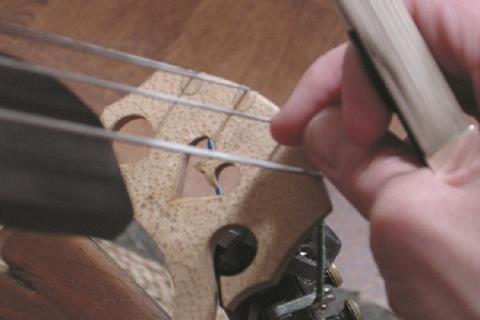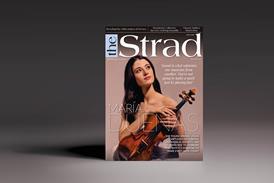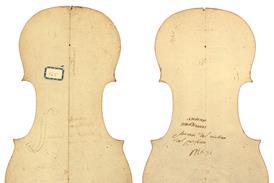Advice on plucking and strumming from 120 years of The Strad

Explore more Technique articles like this in The Strad Playing Hub
Many cellists feel that pizzicato is simply plucking the string and they give little thought as to how to do so. Within the musical context, however, there are a variety of reasons that pizzicato is used and therefore we need to find different ways to pluck. We have the ability to produce as many colours in pizzicato as we do when we use the bow.
One of the choices you have with pizzicato is where on the string you pluck. Most often we do this between the fingerboard and the bridge, but there are other options, such as close to the bridge to get a tight, non-resonating sound or on the fingerboard for a softer, more ringing tone. Next, consider how you will pluck; you can pull the string to one side or the other, lift up, or push down. Flesh can be used to our advantage but don’t forget the nails’
Joan Jeanrenaud, former cellist of the Kronos Quartet, The Strad, June 2004
Dictionaries of music vary, but the majority explain that pizzicato is an Italian word meaning ‘pinched’ and from what we frequently hear in concerts and recitals it would seem that some string players interpret the definition literally and produce a pinched tone instead of a richly vibrant tone. It is not good enough to simply twang the strings. The result will be a note which sounds dead. To obtain a pizzicato note which will carry, the string must be firmly pulled with the fleshy part of the right hand in a direction to the right of the player at an angle of about 10 degrees to the fingerboard.
Harold Rawlinson, The Strad, June 1952
‘In normal playing, the correct amount of finger pressure is always as little as possible – in other words, just enough to make the tone entirely pure. Sometimes we might want to change the tone quality or as part of rhythmic emphasis in the left hand, but continual over-pressing is obviously a waste of energy and may cause tension.
However, since plucked notes ring better the more a string is stopped, pizzicato is an exception to the rule of minimum finger pressure. Of course, you may want to produce a veiled, non-ringing pizzicato by only half-stopping the string, but for maximum ring you need as good a stop as possible.
Simon Fischer, The Strad, January 2010
Almost every commentary on pizzicato recommends vibrato notes in a slow tempo and many people start vibrato on a long note before the right hand stroke. I suggest the opposite is a better tonal tactic. I once heard Kreisler at the Albert Hall begin his recital with the Brahms G major Sonata, an intimate work hardly ideal in that vast arena packed that day with some 5,000 people. In the passage in the first movement where the violin and piano change roles, the violin playing the chords pizzicato and the piano the lovely main theme, the arpeggio violin accompaniment came through with magical effect. I noticed that Kreisler, that supreme exponent of violin tonal matters, kept his left hand absolutely still as his right hand swept the strings, only starting the vibrato movement immediately afterwards.
Robert Lewin, The Strad, September 1979
A great mistake, which many players make, is to play all pizzicato quite tamely, not varying the tone in the slightest degree. In order to produce a very loud pizzicato, pluck the strings very low down the fingerboard – in this case ‘down is up’, that is to say, near the bridge. It is well to remember that the same law which governs bowing governs pizzicato. The nearer the bridge the strings are set in vibration, whether with finger or bow, the louder the tone.
Arthur Broadley, 'A complete course of instruction in violincello playing', The Strad, February 1905
In string quartet playing right hand pizzicato acquires more importance than in solo playing. Quartet players should endeavour to find the effect intended in particular cases. If the string is picked more or less with the nail, it will sound dry, and the effect when made by four players can sound atrocious. If, however, the strings are plucked and vibrato added, the tone can be full and resonant.
Sydney Twinn, The Strad, January 1965
In left-hand pizzicato a lower finger stops the string while a higher finger plucks it. Two of the qualities of successful left-hand pizzicato are (1) clarity: every note is absolutely clear and equal in strength with the others, and (2) machine-like evenness of rhythm.
Left-hand pizzicato on the E string is easier if the elbow is placed more to the left than usual. This lowers the bass-knuckle joints, making it easy to pluck. On the G string, it helps if the elbow is brought a little further in to the centre of the body than usual. This causes the plucking fingers to lift off at an angle that makes them miss the D string. Plucking on the middle strings may require the same position of the elbow as for the G string.
Simon Fischer, The Strad, October 1997
Read: Extended and splendid: 4 techniques for bowed strings to get the creative cogs turning
Watch: Esther Yoo’s practice tips: chord pizzicato
Read: Former Kronos Quartet cellist Joan Jeanrenaud on pizzicato techniques
Explore more Technique articles like this in The Strad Playing Hub






























No comments yet